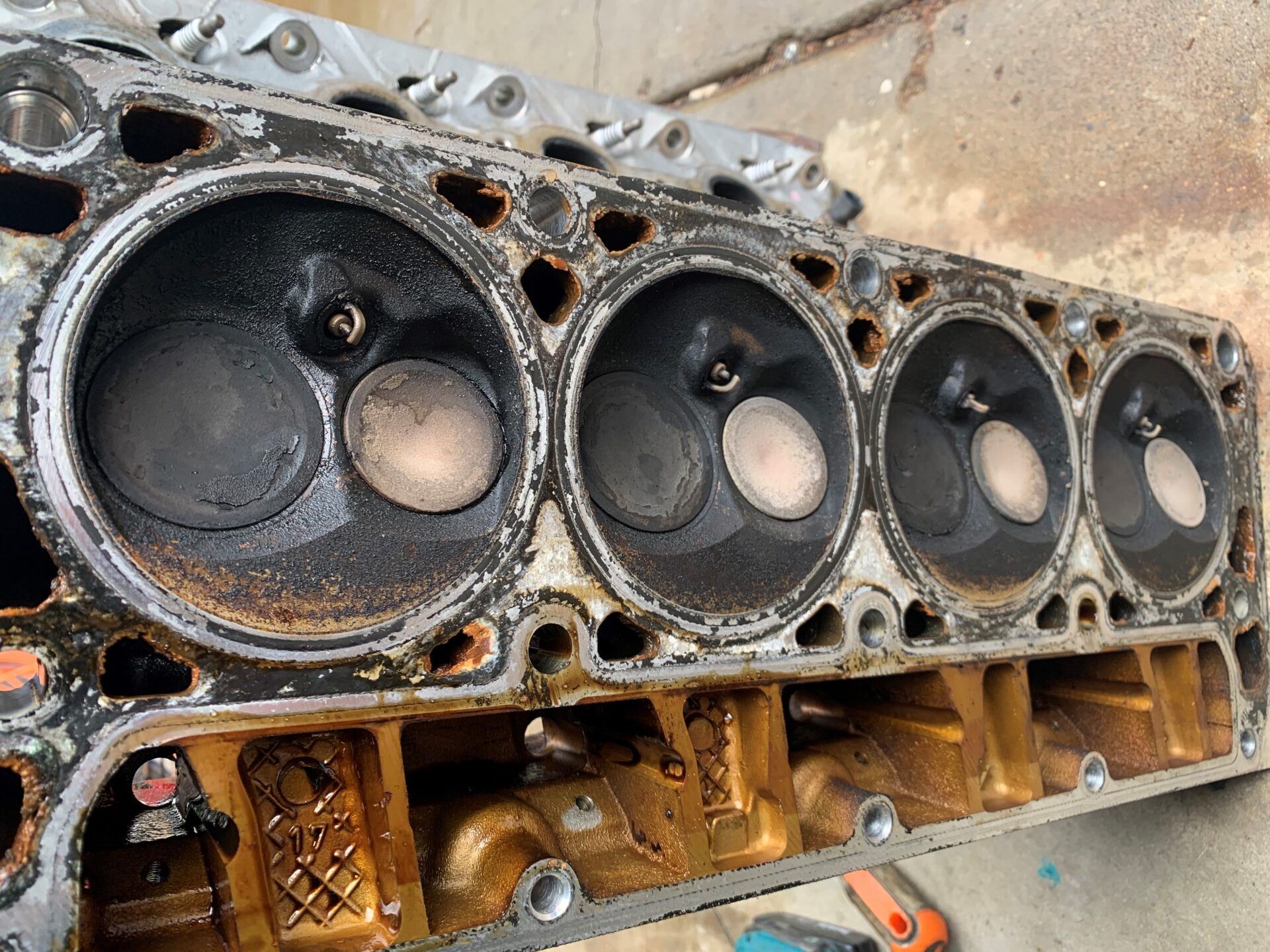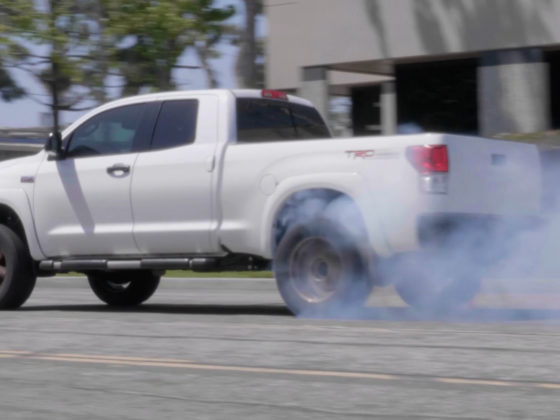Now that the heads are off and the valvetrain is inspected, it’s time to inspect the bottom end. This is a budget junkyard build, so if there are things that are still in excellent shape, I’m not going to replace them. Chief among those avoid if possible items was tearing into the bottom end. Machine work and replacement hard parts would more than double the cost of the build, and I doubt I can do anywhere near as good a job as GM did originally, so if everything checks out on the bottom end, I’m leaving it be. First, and most obvious, is the bore condition. As soon as I pulled the heads, I knew I was in good shape (sorry about the detour down that lifter tray rant). The factory crosshatching was still present, there wasn’t a lip at the top/bottom of the bore where the piston rings never travelled, and all bores were free of any alarming features like vertical scratches, rust or other markings.

Next up was removing the front cover. This requires some patience and care since the crank pulley is tapered for an interference fit (no key), and absolutely does not want to be separated from the crank. The only way to safely remove is with a “Chrysler Harmonic Dampener Puller” rented (or purchased) from the local auto parts store. The shape of the pulley makes life difficult using a standard pulley puller, which keeps getting cattywampus and causing cursewords. Once removed, the front cover can be yanked off. Most of what’s under here is necessary replacement since you’ve gone this far. Chuck the timing chain set and replace, ditto for the camshaft retainer plate. Failure to replace the timing chain set has obvious repercussions, but the camshaft retainer doesn’t. In order to move oil to both banks, GM placed a port (slot, hole, whatever) near the cam. The camshaft retainer plate has a seal built into it that goes flat, and attempted reuse results in pressurized oil leaking out around it (but remaining in the engine) and causing low oil pressure. It’s a $20 part. Replace it. The oil pump is the other major component found behind the front cover, and while you can probably get away with keeping it, it’s $70, I’m replacing it. Chucked.
Final checkout for engine health was removing the oilpan to inspect the bottom end. The first and most obvious sign of trouble is checking the pan itself for glitter. Weirdly, while there was no glitter, there was a pile of… something… that looked like sand. Turns out, the previous owner wasn’t exactly religious on oil changes, and this “sand” was crystalized oil and carbon particles. As soon as they were hit with brake cleaner, they melted away and disappeared. Next up is to wiggle on the connecting rods and other parts to check for obvious play (assuming you didn’t pull an engine you heard run). With the exception of some crank endplay (0.0015-0.0078), and some front to back movement on the connecting rods, there should be zero discernable slop in the bottom end. This is where a major decision has to be made: check tolerances in the bearings themselves, or let the sleeping dog lie. In the case of my engine, the minimal wear everywhere else, and the fact that I heard it run under load, I decided that GM did a better job assembling this engine than I did and left well enough alone.






4 comments
Legality is so overrated.
Pretty much. From James Madison:
The internal effects of a mutable policy are still more calamitous. It poisons the blessings of liberty itself. It will be of little avail to the people, that the laws are made by men of their own choice, if the laws be so voluminous that they cannot be read, or so incoherent that they cannot be understood: if they be repealed or revised before they are promulgated, or undergo such incessant changes, that no man who knows what the law is to-day, can guess what it will be to-morrow.
Very entertaining read. Looking forward to the next update!
Very interested in the project. Hoping to do the same thing in my 2000 Discovery some time over the next year or 2. Fortunately, I don’t have any emissions requirements.